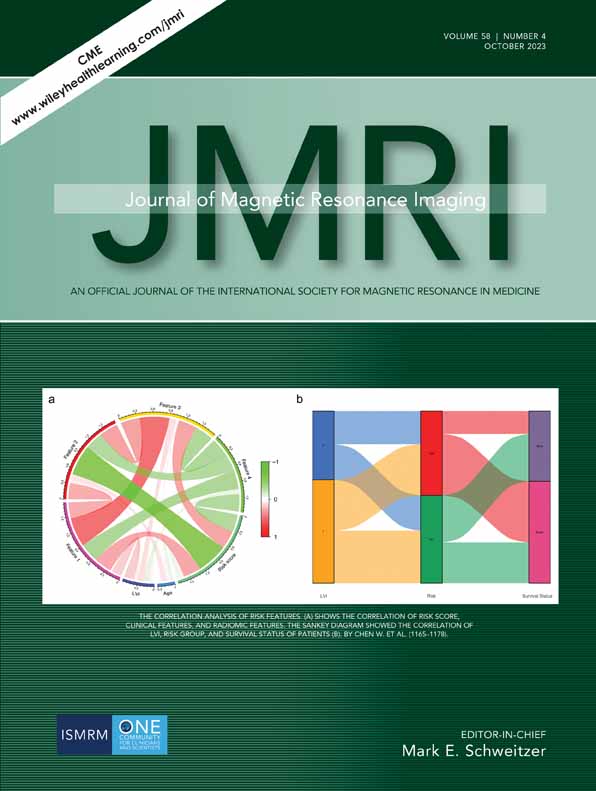Deep-Learning Models for Detection and Localization of Visible Clinically Significant Prostate Cancer on Multi-Parametric MRI
Abstract
Background
Deep learning for diagnosing clinically significant prostate cancer (csPCa) is feasible but needs further evaluation in patients with prostate-specific antigen (PSA) levels of 4–10 ng/mL.
Purpose
To explore diffusion-weighted imaging (DWI), alone and in combination with T2-weighted imaging (T2WI), for deep-learning-based models to detect and localize visible csPCa.
Study Type
Retrospective.
Population
One thousand six hundred twenty-eight patients with systematic and cognitive-targeted biopsy-confirmation (1007 csPCa, 621 non-csPCa) were divided into model development (N = 1428) and hold-out test (N = 200) datasets.
Field Strength/Sequence
DWI with diffusion-weighted single-shot gradient echo planar imaging sequence and T2WI with T2-weighted fast spin echo sequence at 3.0-T and 1.5-T.
Assessment
The ground truth of csPCa was annotated by two radiologists in consensus. A diffusion model, DWI and apparent diffusion coefficient (ADC) as input, and a biparametric model (DWI, ADC, and T2WI as input) were trained based on U-Net. Three radiologists provided the PI-RADS (version 2.1) assessment. The performances were determined at the lesion, location, and the patient level.
Statistical Tests
The performance was evaluated using the areas under the ROC curves (AUCs), sensitivity, specificity, and accuracy. A P value <0.05 was considered statistically significant.
Results
The lesion-level sensitivities of the diffusion model, the biparametric model, and the PI-RADS assessment were 89.0%, 85.3%, and 90.8% (P = 0.289–0.754). At the patient level, the diffusion model had significantly higher sensitivity than the biparametric model (96.0% vs. 90.0%), while there was no significant difference in specificity (77.0%. vs. 85.0%, P = 0.096). For location analysis, there were no significant differences in AUCs between the models (sextant-level, 0.895 vs. 0.893, P = 0.777; zone-level, 0.931 vs. 0.917, P = 0.282), and both models had significantly higher AUCs than the PI-RADS assessment (sextant-level, 0.734; zone-level, 0.863).
Data Conclusion
The diffusion model achieved the best performance in detecting and localizing csPCa in patients with PSA levels of 4–10 ng/mL.
Evidence Level
3
Technical Efficacy
Stage 2




